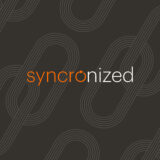When you’re busy running your managed service provider (MSP) business, stopping to write things down can interrupt your flow. However, documentation is vital if you want to run your company effectively and keep your records current.
Proper documentation ensures administrators and technicians can easily find information when they need it, and it can be important for compliance.
Why should MSPs care about documentation?
The documentation you take the time to create will save you time, money, and effort later. Get in the habit now, and it will become easier to infuse it into your workflow over time — plus save you countless hours down the road.
To save even more time, Automated RMM and PSA systems can also improve your ability to keep accurate MSP documentation and do most of the heavy lifting for you.
As a managed service provider, you’ll need to consider two documentation categories: internal documentation and external documentation. Let’s dive into internal documentation first.
Internal MSP documentation
Typically managed service provider internal documentation includes these four documentation types:
1. Licensing for applications and services you use
There are many different software tools MSPs use to run their companies. Each of these will have their own licensing, help desk, and registration details.
Keeping this documentation on file is important because when a system goes down, the last thing you want to do is spend 45 minutes searching for contact information. It’s also helpful to know the exact service plan you have and what it costs when budgeting for a new year.
2. Passwords and login credentials
Just like other companies, IT organizations have a variety of passwords and login credentials that team members use for different internal systems.
Ensure these are documented in a secure location (such as a password manager) and keep tight control of privileged accounts to reduce risk. Internal documentation of passwords and logins will ensure no one is locked out of systems that are vital to their work and to serving clients.
3. Domain registration and website details
Another type of internal documentation is the information for your company’s domain registration and website. This would include your:
- Website’s IP address
- FTP details
- WordPress login details (if applicable)
- Other information related to your website, emails, and domain
4. Standard operating procedures
One of the most important types of internal documentation MSPs need to keep is their standard operating procedures (SOPs). This should be an ongoing process that is kept up to date regularly.
This documentation will include details on:
- How to handle customer tickets
- Expected response times
- How to document communication with clients
- Hours technicians are expected to work
- Other instructions employees must follow to do their jobs
- Instructions for operations integral to keeping your organization running
When hiring, onboarding will be significantly smoother if you have your SOP documentation process readily available and other essential documents for new hires. Make sure you keep these documents up to date.
External MSP documentation
External documentation is just as important as internal documentation. External documentation you typically want to create includes the following:
1. Tickets, resolution details, and customer interactions
Newer managed service providers sometimes fall behind on their customer ticket and resolution documentation. An issue might take just a few minutes to fix, so an employee may decide it isn’t worth writing down anywhere.
This is a bad habit to get into because every interaction is important. One simple fix for a Wi-Fi router might be connected to a larger problem that an account has shortly thereafter. Managed service providers often use Active Directory to handle updates and settings changes, leveraging automation scripts to enhance efficiency.
To simplify ticket documentation, use an automated ticket creation and resolution system that will document all interactions. An ITSM ticketing system makes it easy for an IT professional to type in the resolution notes and create a knowledge base.
2. Customer-specific SOPs
Customers that you work with often have their own set of SOPs you need to know when working with them. You should keep SOP documentation from customers and make it easy to access for any technician who may be required to step in to support their IT needs.
Gather any critical SOPs that help you set up and manage user permissions and define a policy for onboarding and offboarding users.
3. SSL and website information for clients
Many IT businesses host and oversee websites for customers. In this case, important external documentation includes the SSL certificate, IP address, and website information for those sites.
No one wants to get an emergency call because a customer’s SSL certificate just expired, and now potential leads are getting a “not secure” warning when they visit their website. Keep track of this documentation and set reminders to check it for expiration dates.
4. Credentials required to work on client systems
Credentials might include a passcode for the front door or a login for the server. Put a documentation system in place for this information so your team has all the necessary credentials to service customers.
If one person is always handling the same account, it’s easy to become complacent with formal documentation. But this information needs to be in a place where everyone can access it if needed.
5. Backup configurations
Backup and recovery is one of the “bread and butter” services of a managed service provider. You should have multiple backup configurations documented, such as where backups are being stored, how often they’re happening, the data restoration timeframe, etc. This documentation will ultimately help you serve customers better.
Use an RMM & PSA platform to make documentation easy
Syncro’s integrated MSP platform includes RMM (remote monitoring and management), PSA (professional services automation), and remote access to help make MSP documentation — and other functions needed to run a profitable MSP — easy, efficient, and effective.
Syncro’s integrated MSP software is built upon top-notch security standards that can help your organization serve customers with confidence, increase their satisfaction, as well as brand your MSP as a cybersecurity expert. Start your free trial today.
FAQ
What are the two types of documentation?
The two types of documentation are internal documentation and external documentation. Documentation of internal processes includes creating documents with details on:
- Licensing for applications and services you use
- Passwords and login credentials
- Domain registration and website details
- Standard operating procedures
External documentation includes keeping documents with details on:
- Tickets, resolution details, and customer interactions
- SOPs for customers
- SSL, IP addresses, and website information for clients
- Credentials required to work on external systems
- Backup configurations for clients
Why is documentation important?
Documentation is an important part of keeping your MSP business running smoothly and serving your customers effectively.
Proper written documentation ensures both new and existing technicians can easily understand and manage the IT infrastructure for any of your accounts. Taking time to create documents that house important internal and external information will save you time, money, and effort later.
Share














